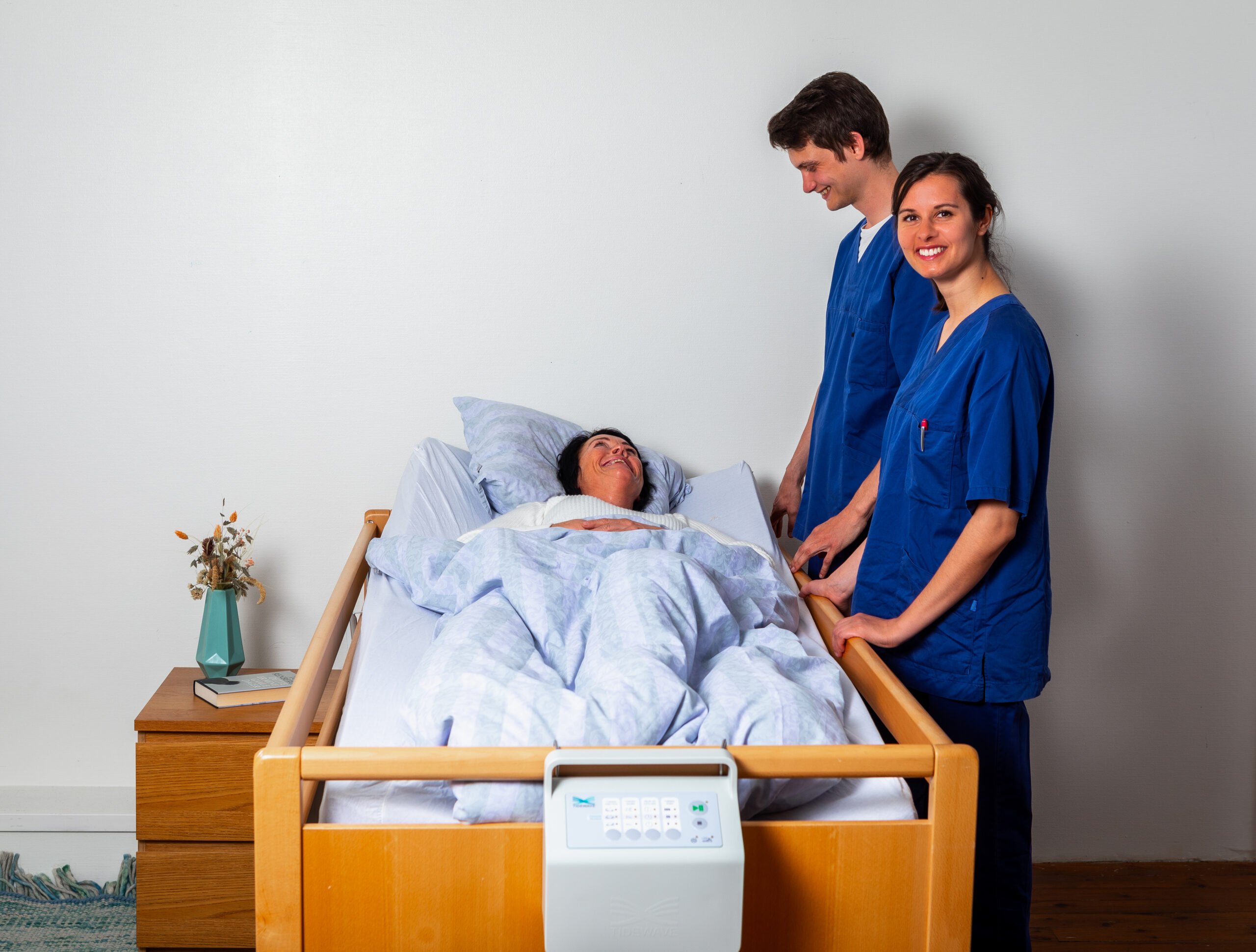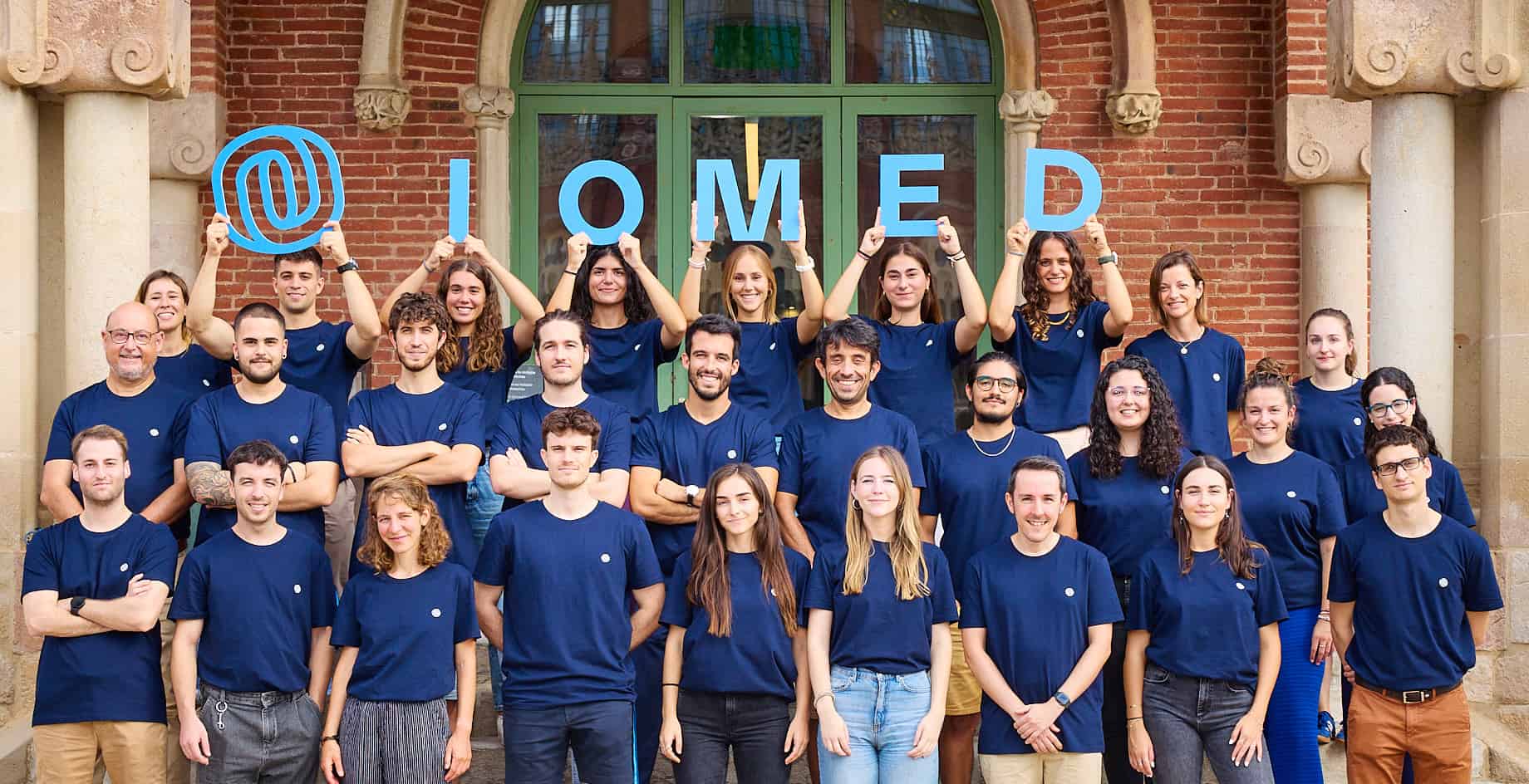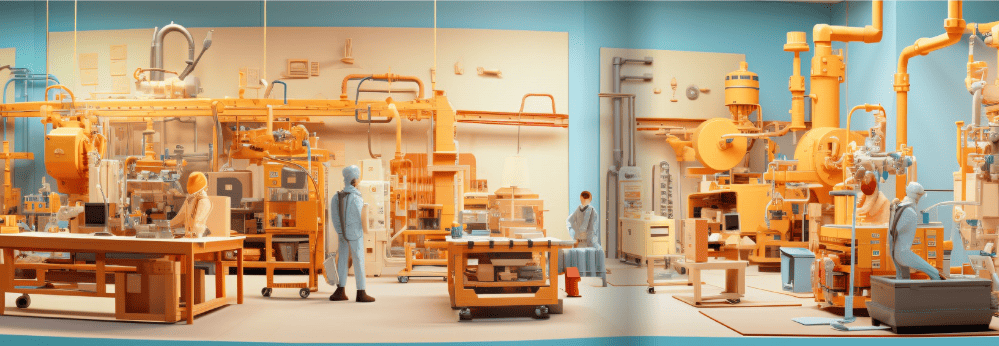
About Tidewave
- Founders: Nina Fagerheim Åmodt, Elen Haugs Langvik and Bjørn Lorentzen
- Founded in: 2017
- Employees: 6
- Money raised: €2.3 million from private investors, €1.6 million in soft funding.
- Ultimate goal: Revolutionize the treatment and prevention of pressure ulcers with innovative technology.
In healthcare, manually turning over patients causes discomfort for both nurses and the patients themselves. Reworking and perfecting a 30-year-old concept, Tidewave has developed a self-moving mattress that can tackle this problem. Innovation Origins spoke to Bjørn Lorentzen, CEO of the Norwegian company.
How does the mattress work?
“The mattress looks like a regular foam one, but comes equipped with a pump unit and it is totally flexible in both directions. When the user is lying on their back – and the device is turned on – the mattress will start curving into a soft u-shape. It does so by carefully folding itself around the patient. The mattress moves so slowly that the user doesn’t even notice that the matress is tilting. The system changes how the pressure is distributed. After it has reached the fully curved position, it will go back and forth both during the night and day. This way, there is no need for somebody to manually turn patients around, so they also get to sleep without any interruptions. The speed, inclination, and the direction of the movement – 30° to both sides or to just one – can be adjusted. Furthermore, the mattress can be set to stop on one side for a certain amount of time. The fact that it is a regular mattress makes it useable at home too.”
How did you come up with this idea?
“It all started in the late nineteen eighties as Audun Haugs – the grandfather of Elen Haugs, one of Tidewave’s co-founders – invented a soft grip tool to move heavy but fragile objects, for use in the petroleum industry. One day, he discovered that the same technology could be used in mattresses. He subsequently developed a prototype and carried out several tests, and noticed it had potential. However, the concept also presented many limitations, so it remained just a promising prototype at the time. Audun then passed away, and his daughter took over the project, but eventually, she also stopped developing it. During our master’s studies, we also got interested in the idea. We then conducted some market research, and found out that there wasn’t such a product on the market, not even over 20 years after Audun’s initial concept. That’s when we decided to work on the idea and set up Tidewave.”

Why is your mattress a better solution to normal ways to reposition?
“Nowadays, turning people over manually is the standard procedure, and it is performed by the healthcare staff or relatives. Such a process presents two main problems: it entails heavy lifting for the nurses, and hospitals don’t have enough people to do that. Also, home carers end up with back pain because they turn patients over manually, who in turn can also suffer trauma by being turned around. Our solution addresses all these problems by providing a mattress that moves continuously. As a result, the mattress improves the patients’ condition and exempts nurses from having to do such a heavy task. What’s more, it helps prevent pressure ulcers, which causes a lot of pain and problems for the patients. These kinds of injuries are expensive to treat. What‘s unique about our product is that the way it curves around gives them the right level of comfort, and avoids all the friction usually involved in turning.”
What were your main challenges along the way?
“For us, it has been difficult to create something that creates added value for the user of the mattress. Another challenge along the way was creating a user-friendly interface. We initially thought of integrating the control unit with a touch screen. However, during the pilot tests, we found out that there was no need for such a thing. It turned out to be more complicated than using buttons. Despite having spent a lot of money on that development, we removed that feature so we could meet the user’s needs.”
What’s next?
“After one year on the Norwegian market, and one year researching the international market, this year we are planning to sign distribution agreements in Sweden and Germany. By the end of 2022, we’d like to have 3 of them in place in order to start international sales. We also plan to do further clinical trials at a specialist hospital in Norway. We’ll gather more information about the product and the benefits of using it. At the same time, we are also about to become a scale-up. A lot of organizational work needs to be done and more people will be joining Tidewave.”








